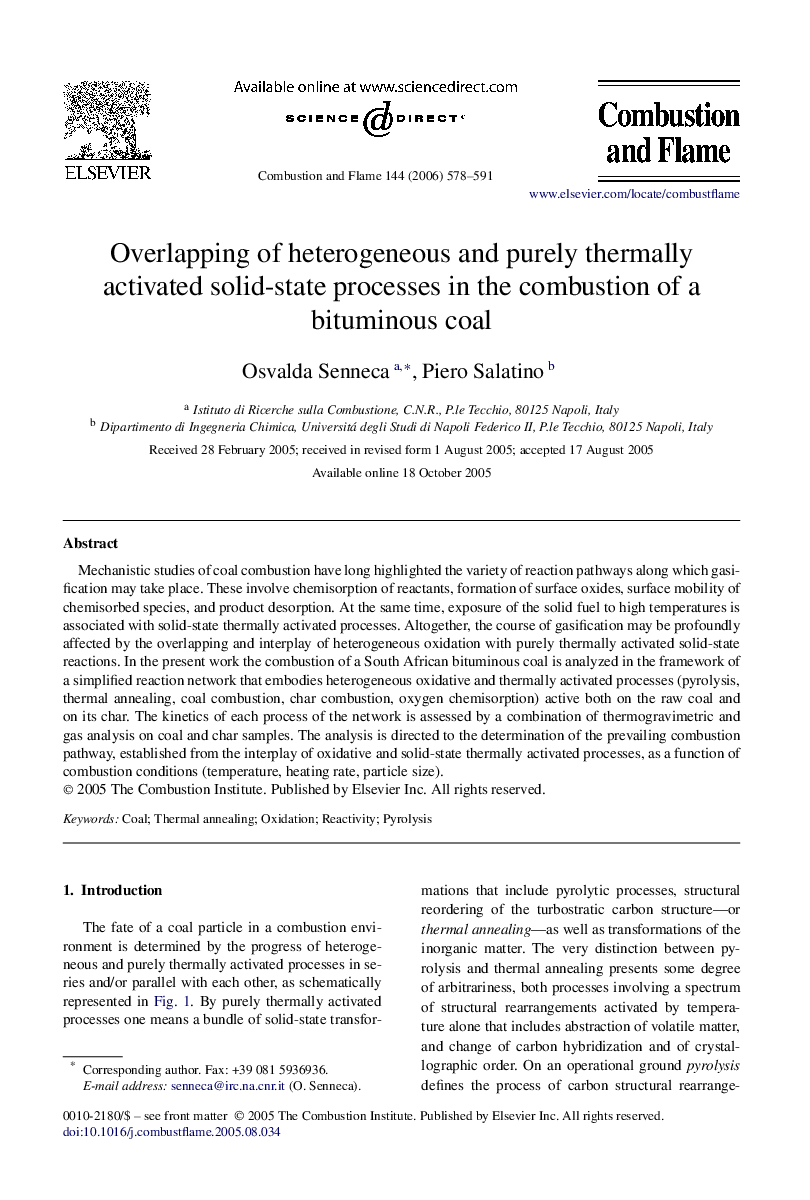| Article ID | Journal | Published Year | Pages | File Type |
|---|---|---|---|---|
| 167515 | Combustion and Flame | 2006 | 14 Pages |
Mechanistic studies of coal combustion have long highlighted the variety of reaction pathways along which gasification may take place. These involve chemisorption of reactants, formation of surface oxides, surface mobility of chemisorbed species, and product desorption. At the same time, exposure of the solid fuel to high temperatures is associated with solid-state thermally activated processes. Altogether, the course of gasification may be profoundly affected by the overlapping and interplay of heterogeneous oxidation with purely thermally activated solid-state reactions. In the present work the combustion of a South African bituminous coal is analyzed in the framework of a simplified reaction network that embodies heterogeneous oxidative and thermally activated processes (pyrolysis, thermal annealing, coal combustion, char combustion, oxygen chemisorption) active both on the raw coal and on its char. The kinetics of each process of the network is assessed by a combination of thermogravimetric and gas analysis on coal and char samples. The analysis is directed to the determination of the prevailing combustion pathway, established from the interplay of oxidative and solid-state thermally activated processes, as a function of combustion conditions (temperature, heating rate, particle size).
